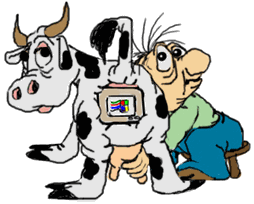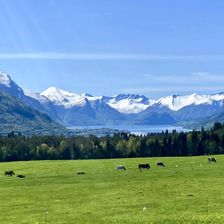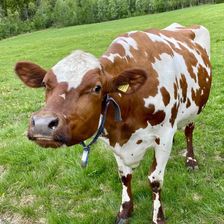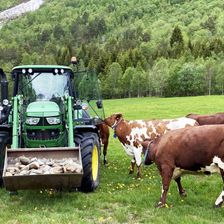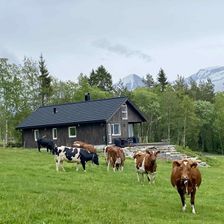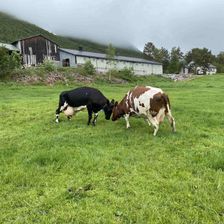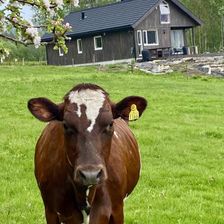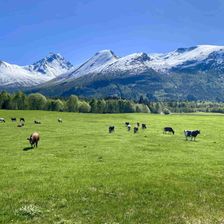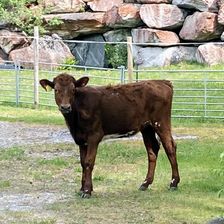- Cows, while grazing, make bowls of grass and swallow them. Later, the cow regurgitates one by one from its stomach into its mouth and then chews them. The cow chews each bite 55-60 times before sloughing it.
- Cows do not sleep. They lie a lot and relax. When they relax, they chew the food they have eaten earlier.
- Chewing produces approximately 200 - 250 liters of saliva. The saliva is necessary for enzymatic degradation of the feed.
- One cow drinks about 100 liters of water per day.
- Adult cow weighs about 700 kg.
- Half year old cow is called heifer.
- The female gets her first calf when she is 2 years old. The calf weighs about 40 kg at birth.
- Our oldest cow is 11 years old and had 9 calves.
- A cow gives in averages about 8,000 liters of milk per year.
Heinåli Farm
Some studies show that cows have soothing effect to humans. It is because of their slower heartbreak and warmer body temperature.
Heinåli Farm is located just a few meters to the Heinåli Hytta. We believe it does not disturb but rather complements the idyllic nature picture.
Aslak has been running the farm since 1997. He took it over from his parents who began to build it since 1972. You can read what he thinks about being a farmer here.
We have 35 dairy cows and as many heifers and calves but this number constantly varies. Milking takes place with a robot. It's a huge thing! The robot is better at milking than any human. The same routine every day, it's good for the cow and it makes the farmer's life more efficient.
Cows are nice companions. They seem big and dangerous, but that they are only if they get a calf. Otherwise, they are mostly calm and curious.
They also have "their days". Each cow has her own character and her habits. It's like with people, they're all different. Some are kind and calm, some neurotic, some troublesome, some must always be first. A farmer quickly learns what to expect from each of his cows.
In the past we used to give the cows a name, but it became quite difficult when the cow got old and/or sick and had to be slaughtered. It hit us hard. Then one day we stopped doing that and we just use a number on them.
"I have lived at Heinåli all my life. I have always thought it was interesting with milk production. It is the complexity of the whole process that makes it fascinating.
The long way from cultivating the soil, removing roots and stones, growing something to be harvested and stored, and eventually fed to become milk and meat.
There is also a long way from a cow is pregnant, to the calf being born and can get its own calf. It takes 3 years.
Development goes as fast as everything else. In the 1970s, the cows stood on booths in Heinåli as well. We had to sit down at each cow to milk.
In the 1990s we did some changes in the cowshed and released the animals. We milked by chasing 5 and 5 in a milking parlor.
It was fine work, better for the knees and back of my father and mother who were running the farm then.
I took over the farm in 1997 and drove it the same way till 2007 when I built up a large extension with better berths for animals and a milking robot. Something that facilitated the work even more, but also set significantly greater demands on me as a farmer. New knowledge of technology and a better understanding of animals and production.
Farm life has its ups and downs. Today, May 10, it snows and I really should be out and set up the fence to a field that will be food to the cows.
The more pleasant it is to sit on the terrace watching the cows eating fresh grass on the fields. Or watch the old cow of 11 years check if there are guests in the cabin, there is so nice juicy grass around there.
The farmer's life is good, I would not change a single thing."
